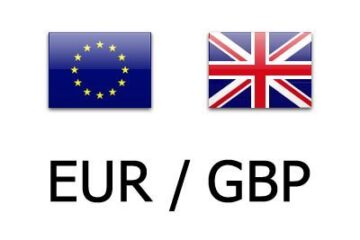The stock market has had a rough time following the tariff announcement on April 2. The S&P 500 was down over 4.5% for back-to-back days, including a nearly 6% tumble on April 4. The Nasdaq Composite fell about 6% last Thursday and Friday.
The stock market’s reaction to President Trump’s announcement on “Liberation Day” was due to higher tariffs than expected. Proponents argue that high tariffs are the best tactic for getting companies to rekindle U.S. manufacturing activity. Opponents argue that tariffs will spark inflation, sending the U.S. economy into a tailspin.
Related: Stanley Druckenmiller sends curt 7-word response to tariff war
The S&P 500’s drop after the higher-than-hoped tariffs, including a whopping 54% tariff on China imports, reflects the greater risk that corporate sales and profit growth will shrink this year, risking stagflation or, worse, outright recession.
Those are real risks facing stocks and the economy and shouldn’t be ignored.
However, stocks don’t rise or fall in a straight line, and mounting evidence suggests that the S&P could be poised for a short-term surge after one particularly rare signal flashed on Friday.
The S&P 500’s sell-off triggered a rare oversold signal.
Michael M. Santiago/Getty Images
The S&P 500’s valuation retreats (finally)
A rip-roaring bull market lifted the S&P 500 by over 20% in back-to-back years in 2023 and 2024, including a healthy 24% gain last year.
The rally was built on optimism that the Federal Reserve would pivot to interest rate cuts amid falling inflation, reversing its hawkish monetary policy stance since it began waging its war against inflation in 2022.
Related: Legendary fund manager sends blunt 9-word message on stock market tumble
Also, investors were emboldened by a flood of spending on artificial intelligence as companies raced to develop their own AI chatbots and agentic AI apps.
Unfortunately, those bullish arguments look flimsier this year.
After cutting interest rates in September, November, and December, the Fed has paused additional interest rate cuts because inflation ticked higher. In February, the Consumer Price Index showed inflation at 2.8%, up from 2.4% last fall.
The pause has removed some of the excitement that lower rates would increase business investment and lower interest expenses on variable debt– bad news for corporate sales and earnings growth, which are the lifeblood of higher stock prices.
AI spending growth could also be peaking. In January, the launch of the Chinese-built Deepseek-R1, a rival to OpenAI’s ChatGPT and Google’s Gemini, shocked everyone when it was revealed it had been developed for only $6 million using cheaper, legacy semiconductor chips, rather than Nvidia’s latest fastest graphic processing units (GPUs).
AI spending is expected to grow this year, but that could change if macro concerns cause the biggest spenders, including hyperscalers Amazon and Google, to ratchet back data center plans. Reports have already surfaced that Microsoft is reevaluating its buildout.
The Fed’s change-of-heart and AI spending worry had already begun taking a toll on the S&P 500 before Trump’s Liberation Day announcement, and it provided plenty of tinder for a sell-off that higher tariffs could light.
The good news is that the S&P 500’s recent retreat has wrung some excess out of its valuation. The benchmark index is now trading at a forward price-to-earnings ratio of 19.4, according to FactSet. That puts it below the 5-year P/E average of 19.9 and closer to the 10-year average of 18.3. It was 22.2 in February.
While the S&P 500 still isn’t cheap, it is finally in the 18-20 range that at least, historically, shows flat one-year returns rather than losses in the coming year.
The forward S&P 500 P/E ratio has fallen dramatically since mid-February 2025.
Leon Cooperman/Doug Kass.
The S&P 500 flashes a rare oversold signal
The speed and depth of the sell-off triggered a slate of sentiment indicators to show the S&P 500 is oversold.
CNN’s Fear/Greed Index registered “Extreme Fear.” At the same time, the American Association of Individual Investors survey saw bearish outlooks for the coming six months swell to 61.9%, the third highest on record and the highest reading since the stock market bottomed in March 2009 during the Great Financial Crisis.
Related: Billionaire Michael Bloomberg sends hard-nosed message on economy
Plenty of other measures also spiked to levels consistent with actionable short-term relief rallies. The volatility index, or VIX, skyrocketed above 50 from near 20 before the tariff announcement. Also, the CBOE’s put/call ratio, measuring bearish put to bullish call option activity, has surged to 1.2, in the vicinity of levels of fear coincident with a rally.
Those measures already suggest the S&P 500 may find its footing, at least in the short term, but another rare signal, a relative strength index (RSI) (14) reading below 30, is also bullish.
RSI (14) measures price action over the preceding 14 trading periods and can signal when stocks become overbought and oversold. An RSI above 70 on the S&P 500 signals buyer beware. However, a reading below 30 suggests a sell-off may be getting overdone.
On April 4, the RSI on the SPDR S&P 500 ETF Trust (SPY) dropped to about 23, and it remained there on April 7.
For perspective, that’s lower than the 28 recorded near the lows in October 2023 and the 27 reading recorded near the lows in September 2022. It also has the lowest RSI since it registered below 20 near the Covid-lows in early 2020.
Of course, nothing is guaranteed, and stocks can always fall further than anyone expects. They can remain oversold for a while and become more oversold. As John Maynard Keynes famously wrote, “Markets can remain irrational longer than you can remain solvent.”
Still, the low RSI reading may suggest that the S&P 500 bounces in the short term. In the intermediate or long term, well, that will likely hinge on whether high tariffs fuel inflation, causing consumers and businesses to sit on their wallets, resulting in stagflation or a recession.
Related: Veteran fund manager who forecast S&P 500 crash unveils surprising update


